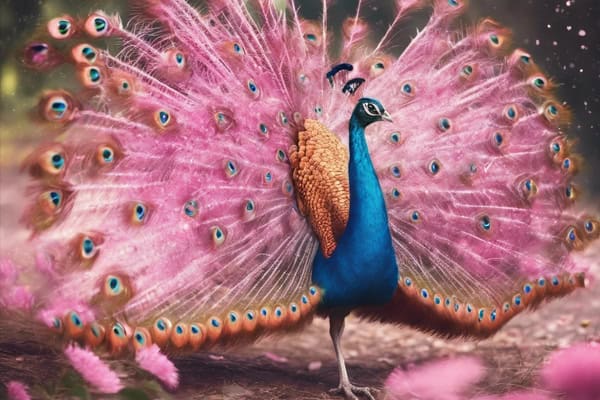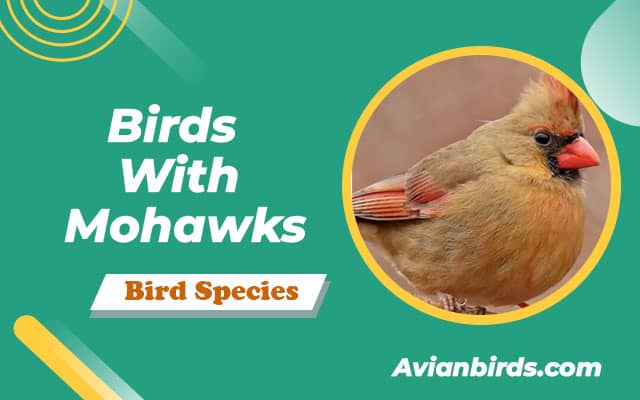Are Pink Peacock Real or Fake? Exploring the Myth and Reality
The idea of a pink peacock sounds magical. The image of a graceful bird, normally adorned in iridescent blues and greens, strutting around in soft pink plumage feels like something straight out of a fantasy. But can such a creature exist in the real world, or is it just an artistic invention? This article takes a deep dive into the question of whether pink peacocks are real or fake, examining the biological, historical, and cultural factors surrounding this vibrant claim.
Peacocks and Their Iconic Plumage: A Quick Overview
Before we get into the pink variety, it’s important to understand what makes a peacock, or more specifically, a male peafowl, so iconic. Peafowl, native to South Asia, belong to the genus Pavo, which includes two species: the Indian peafowl (Pavo cristatus) and the green peafowl (Pavo muticus). There’s also the Congo peafowl, native to Central Africa, though it looks quite different from its more flamboyant cousins.
The male peacock’s resplendent tail, or train, made up of hundreds of elongated upper-tail coverts, is a remarkable display of vibrant color and iridescence. Each feather ends in an eye-shaped spot, often in hues of blue, green, gold, and black. This dazzling plumage is a tool for courtship, as male peacocks fan out their tails in an attempt to attract females. These colors result from a combination of pigmentation and the microscopic structure of the feathers, which refract light in different ways. For example, this is what gives peacock feathers their shimmering, multicolored effect.

What About Pink Peacocks?
Peacocks are well-known for their blues and greens, so where does the idea of a pink peacock come from? The short answer is that no naturally pink peacocks exist in the wild. This doesn’t mean, however, that the idea of a pink peacock is entirely without basis. Let’s look at where this notion comes from, both from a biological and cultural perspective.
1. Biological Possibilities
While pink isn’t a naturally occurring color in peafowl, certain variations of peafowl could give the illusion of pink under certain conditions. The most relevant cases involve albino and leucistic peacocks.
- Albino Peacocks: Albinism is a genetic condition where animals lack melanin, the pigment responsible for skin, hair, and feather color. An albino peacock would be completely white, lacking a typical peacock’s brilliant blue, green, or even gold hues. While albino peacocks are striking, their lack of pigment means they wouldn’t appear pink. Albino animals typically have red or pinkish eyes due to lacking pigmentation, which might add to the myth, but the remaining bird would remain white.
- Leucistic Peacocks: Leucism is another genetic condition, but unlike albinism, it causes a partial loss of pigmentation. Therefore, leucistic peacocks might have patches of color, or their overall appearance could be a faded version of the typical peacock. Sometimes, due to this faded coloration, these birds might appear to have a soft pinkish tint when light reflects off their feathers. However, this would still not make them truly pink, as their coloration is more about light reflection than actual pigmentation.
There are also selective breeding programs that aim to create rare color variations in peacocks. Breeders have developed various morphs of peafowl, including white, opal, and even peach varieties. The “peach” mutation can sometimes appear as a very pale pink, but this is not a naturally occurring trait and is still far from the vibrant pink imagined by many.
Related Articles:
2. The Role of Light in Creating “Pink” Feathers
While genetic mutations like albinism or leucism can create light-colored peacocks, another factor that can play into the pink peacock myth is how light interacts with feathers. Feathers don’t contain pigment in the same way that, say, fur does. Instead, their color comes from microscopic structures in the feathers that refract and scatter light. This is why a peacock’s feathers can seem to change color when viewed from different angles.
In some lighting conditions, particularly during sunrise or sunset, when the light has a reddish-pink hue, a white peacock or even a particularly light-colored peacock could appear to have a pinkish tinge. This effect, though temporary, might fuel the notion that pink peacocks are a real, biological possibility.
The Cultural Fascination with Pink Peacocks
While biology may not support the existence of pink peacocks, the concept of these mythical birds has gained traction in art, media, and fashion. There are several reasons why pink peacocks have captured the imagination, even if they don’t exist in nature.
1. Pink as a Symbol of Fantasy and Exoticism
Pink has long been associated with beauty, romance, and the exotic. It’s a color that stands out, soft yet bold, and is often used to depict something otherworldly or magical. The idea of a pink peacock fits into this framework of fantasy. After all, peacocks themselves are already seen as extraordinary birds, with their dazzling iridescent feathers and elaborate courtship displays. Adding pink to the mix elevates them into the realm of the mythical.
Pink peacocks are frequently featured in fantasy art, children’s books, and even fashion designs, serving as symbols of beauty and grace. These artistic representations have little to do with biological reality, but that doesn’t stop them from capturing the public’s imagination.
2. Art and Iconography
Across different cultures, peacocks have been symbols of beauty, immortality, and pride. In Hindu culture, the peacock is associated with the goddess Saraswati, symbolizing wisdom and serenity. The bird also appears in Persian art, where it represents dignity and protection. In many cultures, artists and designers take creative liberties with natural elements, and it’s easy to see why they might choose to represent the peacock in pink—it’s both visually striking and imbued with symbolic richness.
Pop culture, fashion, and design often adopt this concept. Pink peacocks have appeared in haute couture runway shows, modern art installations, and even tattoos. For instance, various designers have used the motif of a pink peacock in their work to blend natural beauty with a fantastical twist.
3. Pink Peacock in Social Media and Viral Content
Recently, images of pink peacocks have gone viral on social media. These photos are often digitally altered or showcase white peacocks in settings that play with light and filters to give them a pink hue. Thanks to Photoshop and other digital tools, pink peacocks can easily be created and shared widely, perpetuating the myth of their existence.
It’s not uncommon for these digitally manipulated images to be reposted with misleading captions, leading people to believe that pink peacocks are real. However, as charming as they may seem, these images are the product of modern technology rather than biology.
The Verdict: Are Pink Peacocks Real or Fake?
So, after all this exploration, what’s the final verdict on pink peacocks? Unfortunately for fans of this fanciful idea, pink peacocks do not exist in the wild or in any naturally occurring form. The closest thing to a “pink” peacock might be a light-colored peacock appearing pinkish in certain lighting conditions or selectively bred peafowl that come in unusual color morphs, such as the peach variant.
However, the concept of a pink peacock endures thanks to cultural, artistic, and digital interpretations. Through artistic license in paintings, whimsical digital manipulation, or the captivating use of light, the pink peacock persists as a symbol of exotic beauty and fantasy. While you won’t find one in a zoo or nature reserve, you can still enjoy their representation in various forms of creative expression.
Read More🐦Related Articles:
- Hummingbirds in Wisconsin
- Vultures in Georgia
- Falcons in Arizona
- Hawks in Hawaii
- Hummingbirds Found in Oklahoma
Final Thoughts
The idea of pink peacocks may not be grounded in biological reality, but it has proven to be an enduring and delightful fantasy. Whether through selective breeding that produces unusual color morphs, the manipulation of light and photography, or artistic imagination, the pink peacock continues to flutter its way through popular culture. So, while pink peacocks may not walk the Earth, they certainly live in our imaginations—and perhaps that’s enough.
The next time you come across an image of a pink peacock, you’ll know it’s likely a product of human creativity, but that doesn’t make it any less captivating. After all, sometimes, the beauty of nature and the power of human imagination come together in ways that are just as enchanting as the real thing.






